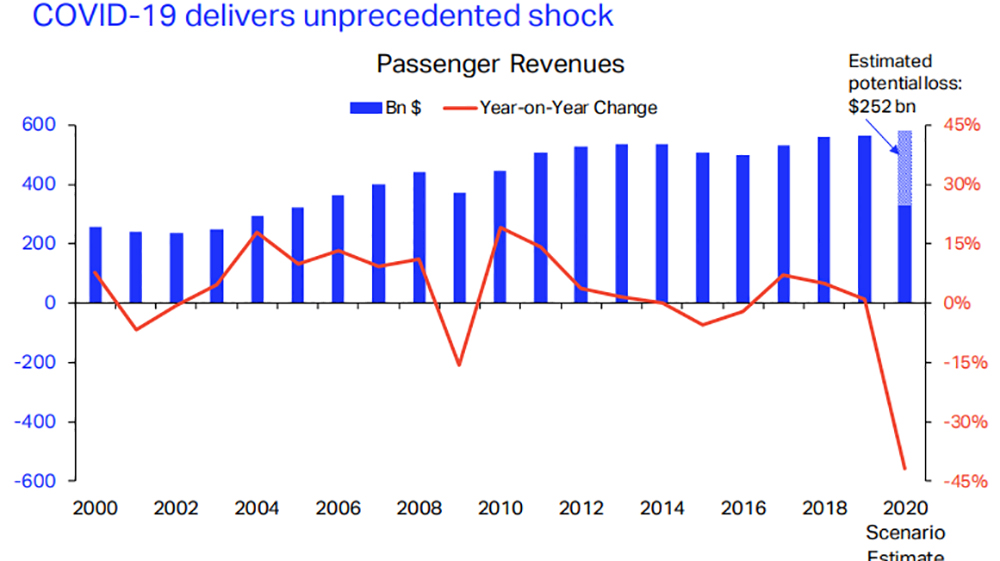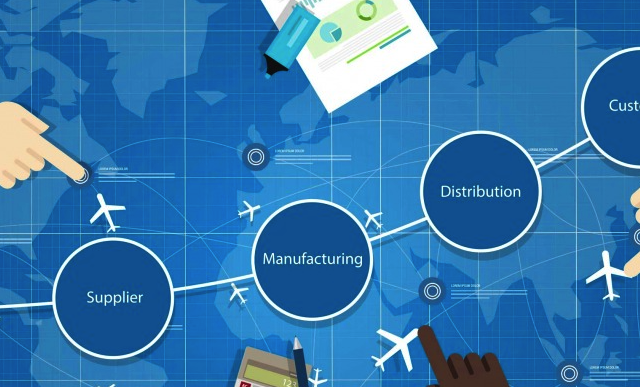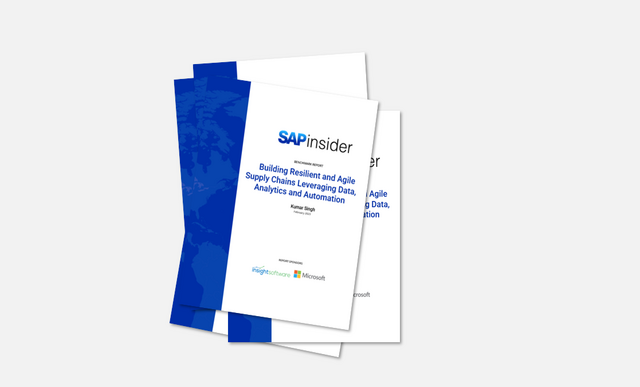The Future of the Airline Industry in a COVID Environment
By Brianna Shipley, Senior Editor, SAPinsider
Getting on an airplane is often the first physical step individuals take to travel to a new destination. While they will perform myriad comparisons before choosing a flight (such as cost, a direct route versus layovers, and time of take-off and landing), eventually they will find one that suits their travel needs. In the past, the convenience of this availability has been a result of airlines’ ability to make accurate projections of demand for particular routes based on historical flying trends and landing slots secured. In this sense, the travel and transportation industry functioned much like an ecosystem, where demand increases or decreases could be predicted based on hotel bookings, for example. Now, with uncertainty around when it will be safe to travel again due to COVID-19, the interactions of this system are no more reliable than the weather.
“There will be additional constraints, border restrictions, and the number of people carried will have to account for social distancing requirements,” says Phil Te Hau, Vice President of Passenger Transportation at SAP. “The predictability of their current planning models will be disrupted, and changes to schedules and timetables will likely happen more frequently than before.”
Explore related questions
According to Torsten Welte, Global Vice President, Head of Aerospace & Defense, and Head of Travel & Transportation at SAP, the economic disruption caused by the pandemic has “exposed the criticality of digitalization in every industry.”
By nature, SAP systems capture data from past transactions. With the advent of emerging cloud products, SAP S/4HANA, and the reporting and analytical aspects of SAP Fiori applications, SAP has been able to quickly enrich this historical data with situational data to optimize users’ decision-making capabilities. Businesses can quickly adapt to the current situation by using these tools in a different way to understand what this new environment truly looks like.
Welte explains that in our current situation, managers can no longer rely on their experience to inform their decisions, as they did in the past, because that experience was based on predictable situations. “In this dynamic market with rapidly changing influences, decision makers need to be able to use data as a soundboard for their next decision,” he says.
The Impact
The closure of borders in an attempt to stop the spread of COVID-19 grounded airplanes around the world, a shock that hit the US airline industry around March. These closures resulted in a dramatic drop in air travel and airline revenues compared to previous years, according to the International Air Transport Association (IATA), as shown in Figure 1.

Figure 1–IATA Economics’ Chart of the Week, March 27, 2020
This unexpected decrease in travel — which is also demonstrated in a stark image published on Flightradar24’s Twitter page, which shows a 62% reduction in total air traffic and a 73.7% decrease in commercial air traffic during the month of April — forced airlines into survival mode. National carriers started seeking government bailouts and ways to manage down costs around maintenance, aircraft leases, employees, and liabilities. (The IATA estimated that airlines’ liabilities reached $35 billion in the second quarter of 2020 through cancellations and refunds.)
In an effort to maintain customer loyalty, many airlines have extended loyalty memberships and, like many businesses, implemented regular customer communications and updates. Some airlines have been able to stay in the air by shifting their purpose. For example, they provide only repatriation flights (flights that bring home citizens who were stuck abroad when the virus struck) or transport cargo such as medical supplies, with freight often strapped to seats for transport, according to stories shared by the airline industry.
Reimagining Route Planning
There are two realities being reported and discussed within the industry. First, not all airlines will survive this crisis, and of those that do survive, many will need to seek funding in addition to the government bailouts that have already been issued to resume business as usual. The second reality is that routes and borders will eventually reopen, and once they do, airlines that are still in the game will need to guarantee health and safety for their crew and customers.
Being able to forecast the demand for a route is extremely important for airlines to ensure their viability because airlines only get several landing slots per month or per year, according to Te Hau, and losing those slots would be detrimental in any forward planning or demand forecasting. He says that airlines are currently working with government organizations to first protect the slots they have, on the premise that landing patterns will eventually normalize. Once they have those slots, they can plan around them as to the number of flights they would have in any given week to a destination. This then drives the capacity equation, which Te Hau says will be further constrained as airlines adapt to new health and safety requirements for social distancing in the short to medium time frame. “Staffing and scheduling need to be addressed as they build out new schedules,” he says.
Route planning represents a big-picture level of preparation and answers the question of where airlines will fly to next. Welte says that until airlines are able to reach full capacity, which will help them break even on the costs of flying, they may consider sharing routes, “which will require flexibility in the booking system and collaboration among airlines.”
Once routes have been established, airlines will begin to plan on an operational level by considering what they need in terms of fuel, catering, maintenance, and turnaround servicing (the time that passes between when an aircraft lands to when it takes flight again), for example. “SAP has a set of tools when it comes to forecasting demand and providing a view of that demand where we can help airlines as they begin to grow again,” Te Hau says. These include SAP Analytics Cloud (for planning, forecasting, and reporting); SAP Profitability and Performance Management (for route profitability); and SAP Integrated Business Planning for Supply Chain (for capturing direct operating costs).
Further down the road, airlines will want to start thinking about performing material requirements planning (MRP) simulations to understand and anticipate the flow of inventory.
“Companies and airlines have to simulate business situations as part of their operations and decision-making processes, and therefore, as part of the transactional system. A great example of how SAP has embedded simulation into the transaction is within MRP, where the analyst can analyze and simulate to find the ideal solution,” Welte says.
With supply availability and border restrictions subject to change on a daily basis, the importance of completing these simulations has increased dramatically.
Preparing the Airline Workforce to Safely Return to Work
Before airlines can begin to consider how they will fill their seats with passengers, they need to consider how they can fill their airplanes and airports with staff, and how to ensure that employees feel safe to return to work. Measuring employees’ comfort levels can be challenging.
The Qualtrics XM Institute has created several free solutions to help businesses stay connected to their employees and understand how they are coping with their new work situations on multiple levels, including ascertaining whether essential onsite workers feel supported, if employees fall into the high-risk category for COVID-19, and if they feel prepared to meet the usual expectations in a remote environment. However, a way to gauge if employees feel safe returning to work has yet to be developed.
In addition to the dilemma of understanding employees’ comfort with returning to work, airlines are faced with the gray area of who should be allowed back, according to Te Hau. “For example, do you put someone who falls into the high-vulnerability category back onto the frontlines with additional safety precautions in place, or do you repurpose their role to be more behind the scenes? Reviewing staff allocation and rostering as part of a broader risk analysis provides opportunities for restructuring,” he says.
Regardless of how these important questions are answered, one fact is clear: When airports and airplanes do reopen to passengers, they will be entering a different world, with new security procedures and protocols to follow. The SAP Litmos learning management system is one delivery mechanism that can be used to provide new training in a packaged, modular format to flight attendants in their living rooms or, when it gets to that stage, in the work environment.
“On one side you have recurrent training. On the other side, you have to be ready to gear up your workforce when they return,” Te Hau says. When the virus began to spread, he continues, “lots of people stood down, so as places reopen, what does day 1 look like, and what do new policies and procedures look like when it comes to handling the new normal?”
Flight attendants and other airline staff will need to know how to handle commonplace situations — such as boarding a plane or dealing with a passenger who is unfit for travel — in the face of new social distancing guidelines, risk assessments, and safety precautions. Having those policies and procedures on hand at all times will be an important aspect of reopening safely.
The Future for Air Travel
Pre-COVID-19, airlines ensured profitability by filling every seat. Now, to ensure adherence to social distancing guidelines, Te Hau suspects there will be separation between seats. “For example, the middle seat might disappear for the short term,” he says. While this type of change might offer a roomy experience, this could mean increased airfare costs for travelers, because airlines still need to make a profit.
When air travel does resume, Te Hau imagines that in the beginning, travel interactions will be slow and confusing. “At the moment, there’s no standard across the globe for what it means to work in a COVID environment,” he says. “If you look back at what happened in the days following 9/11, there were a lot of restrictions that were imposed, and we had large queues running out the door because no one knew how to handle the new security process. We will now have the old security checks that we must go through, which differ from country to country, and then we’ll have this health and safety aspect of what it means for passengers to be fit for travel. And if you’re found to not be fit for travel, what are the processes for dealing with that person?”
SAP is concerned with managing the uncertainty, according to Welte, “because there’s no playbook for this.” Te Hau adds, “When we’re able to fly again, it will be baby steps until we get confidence.”





